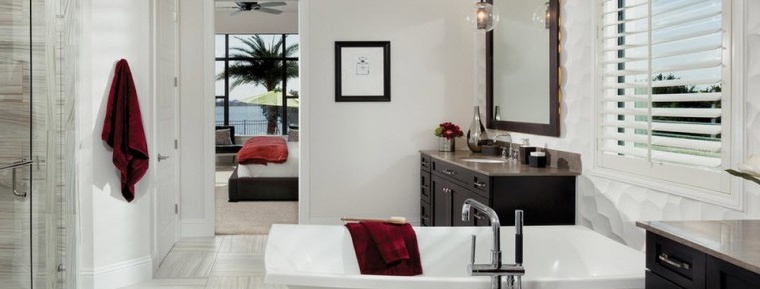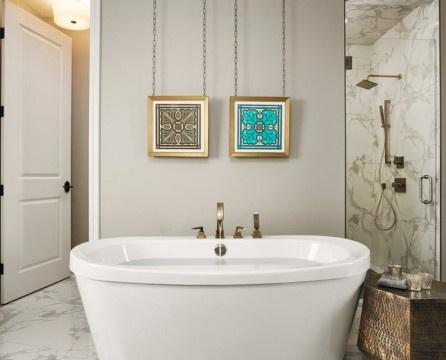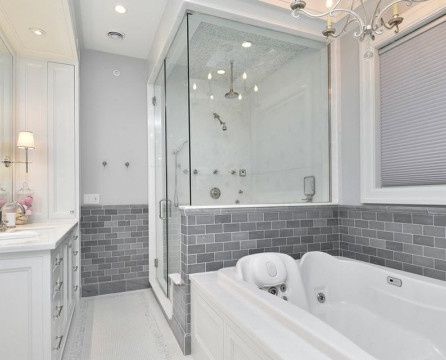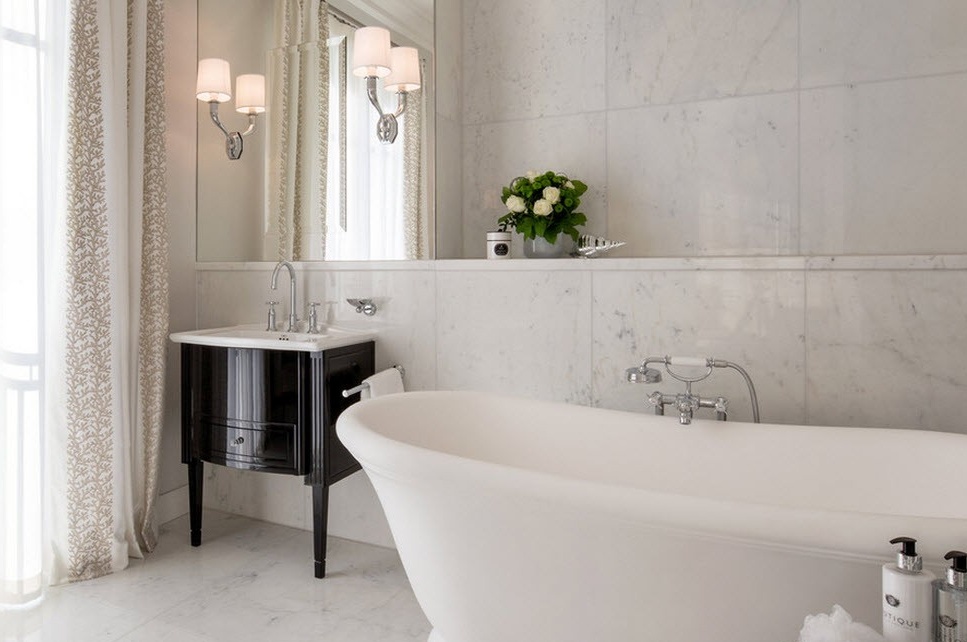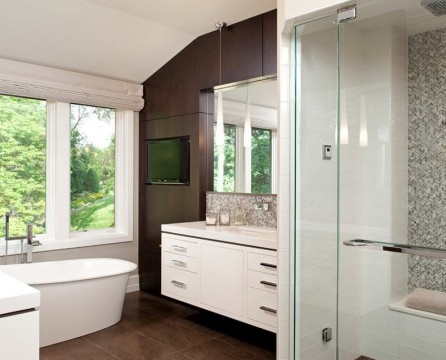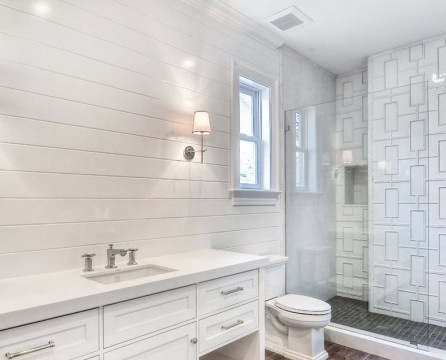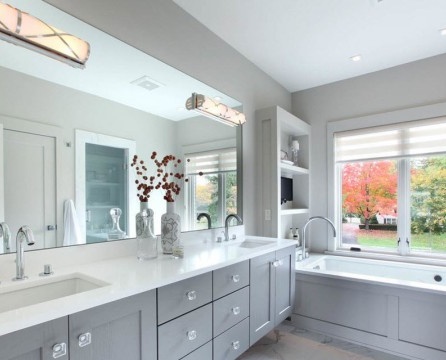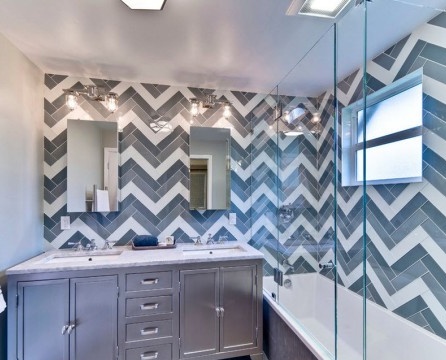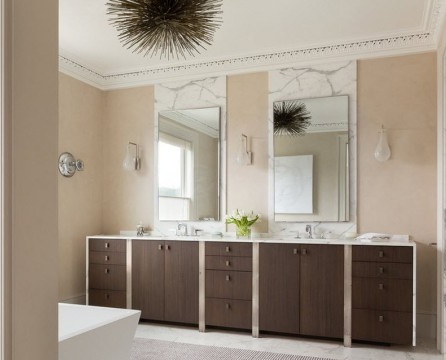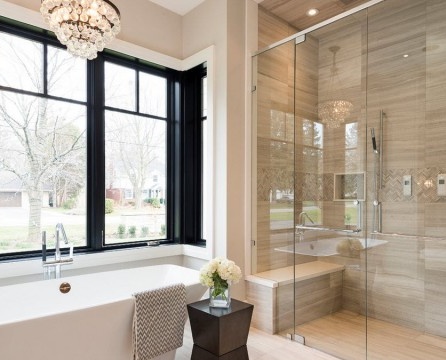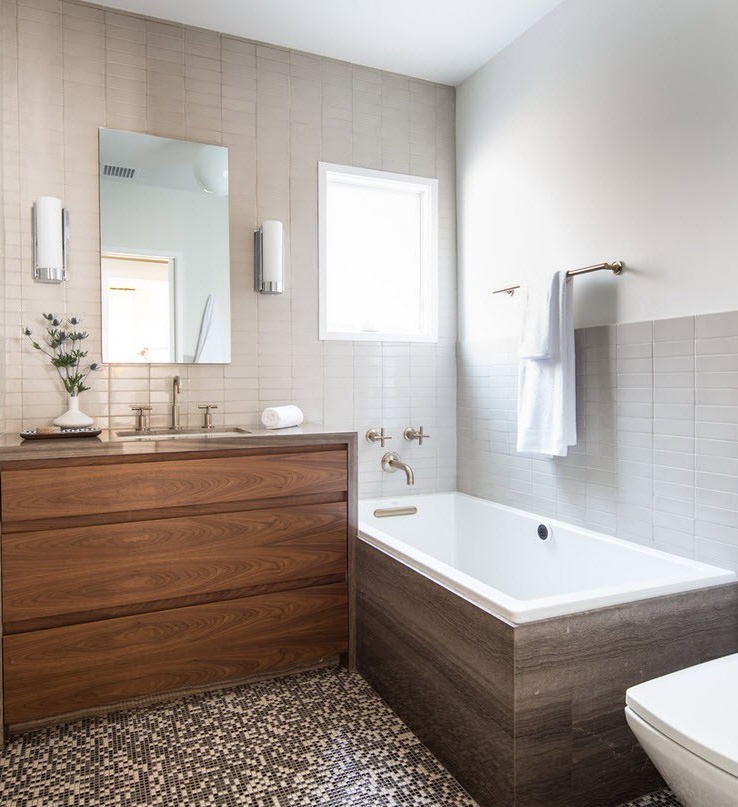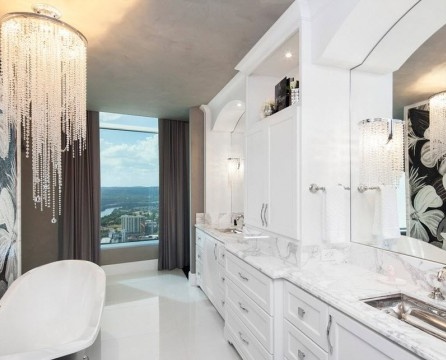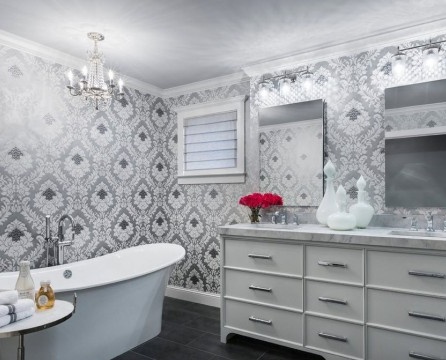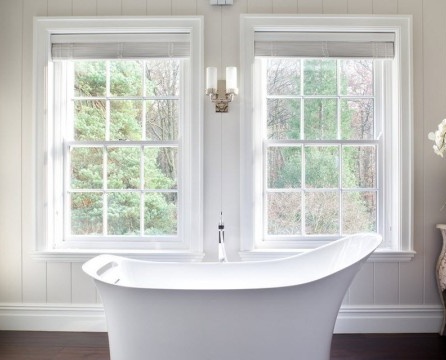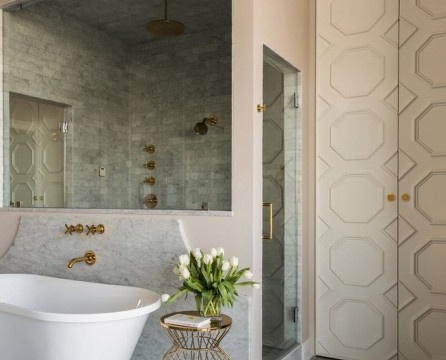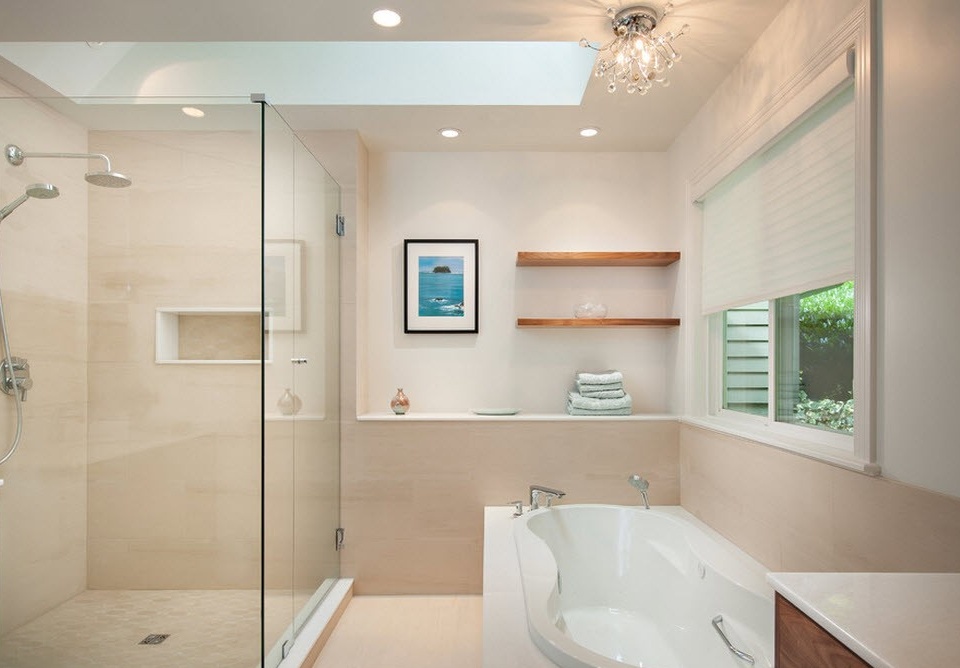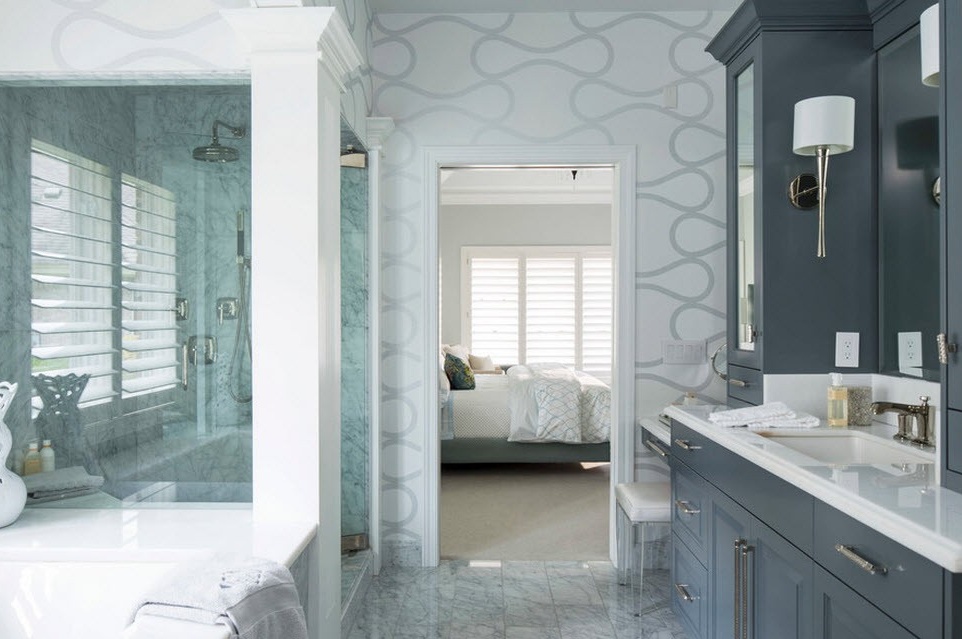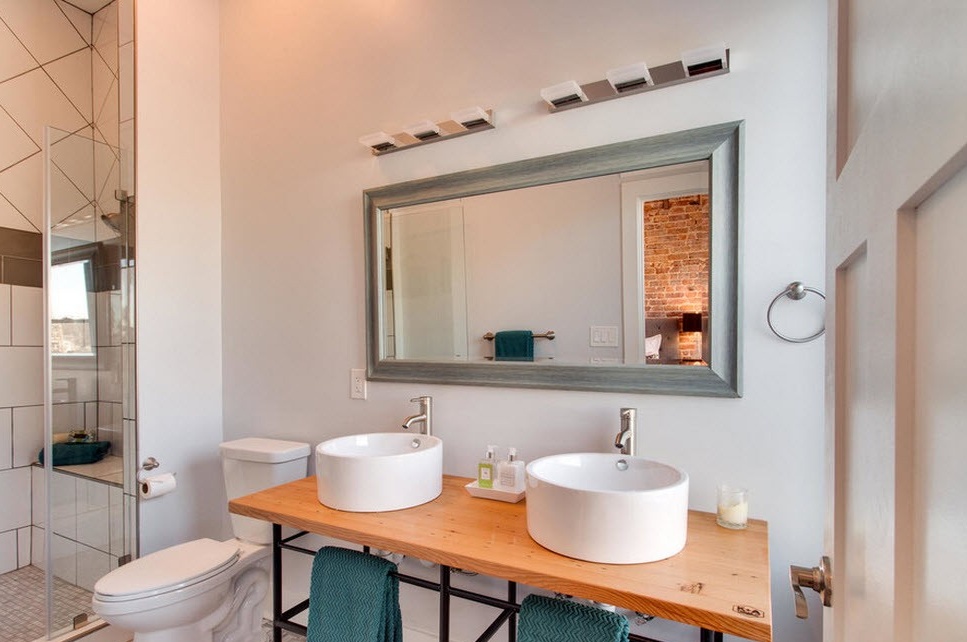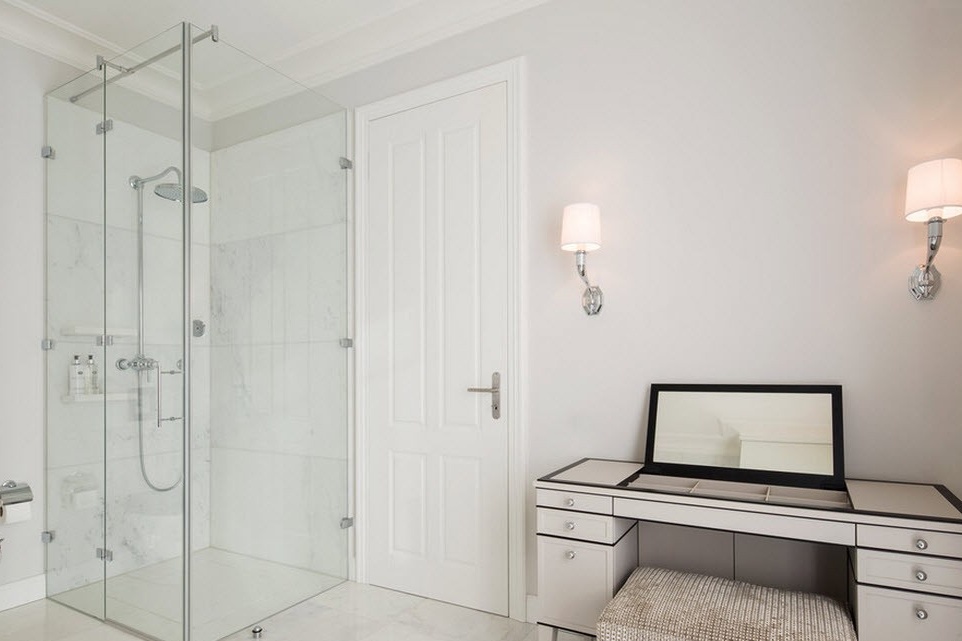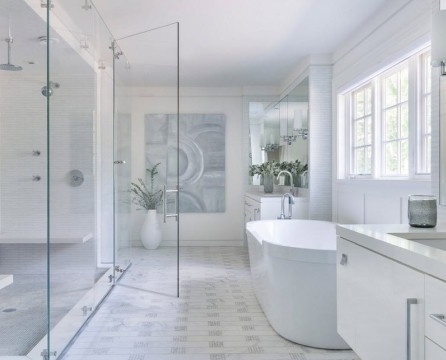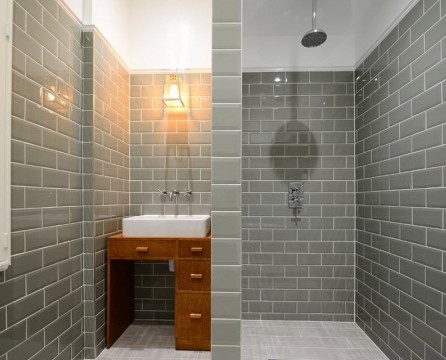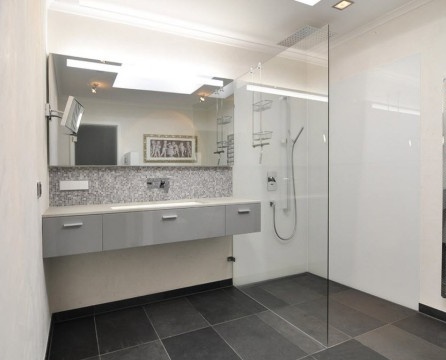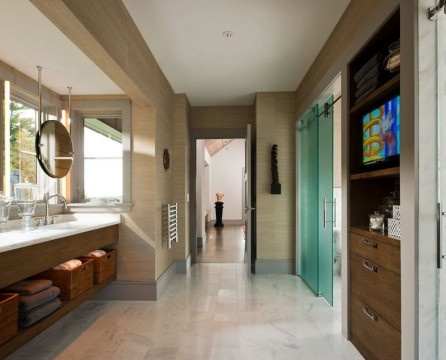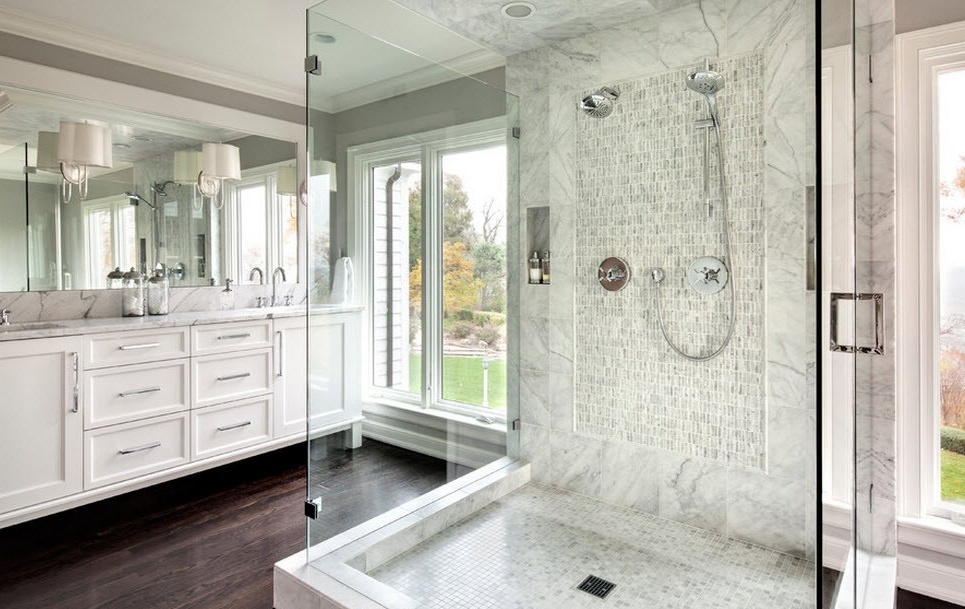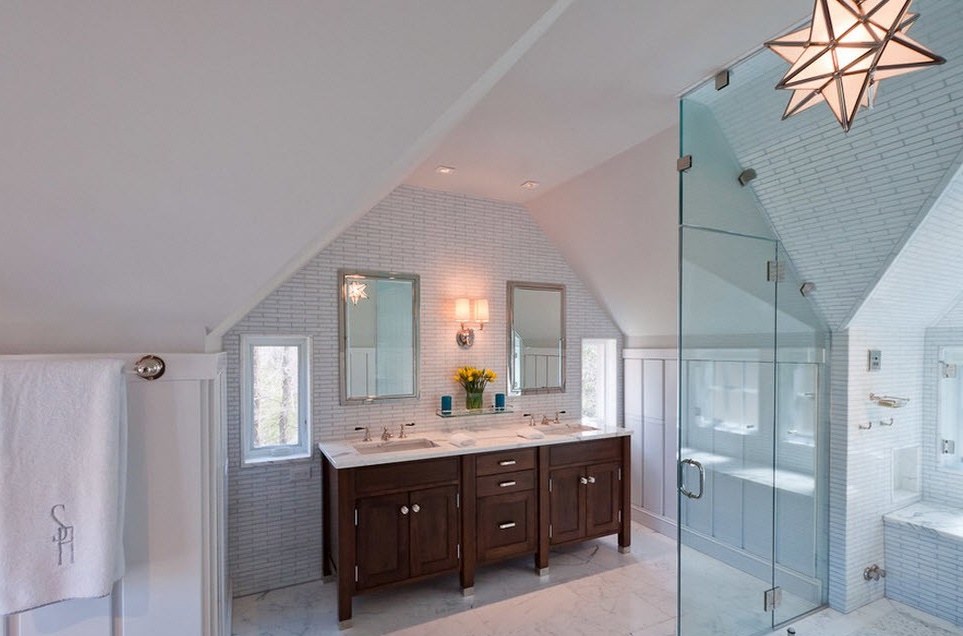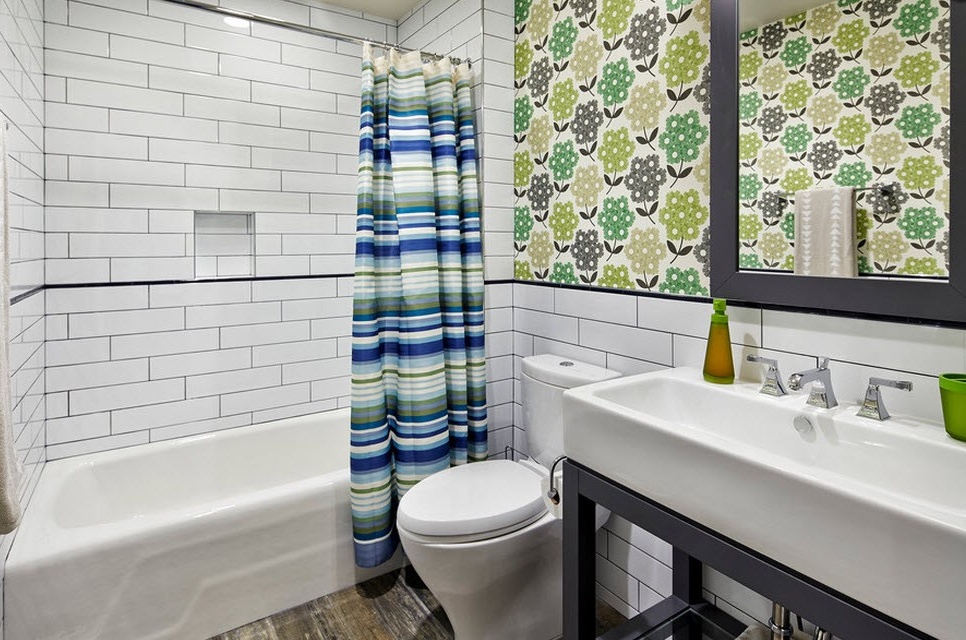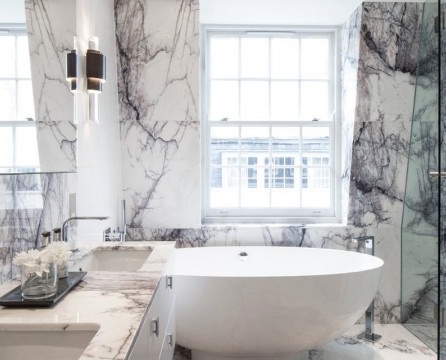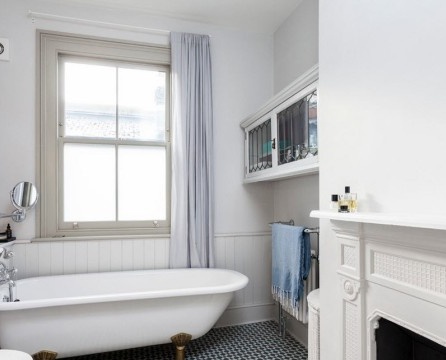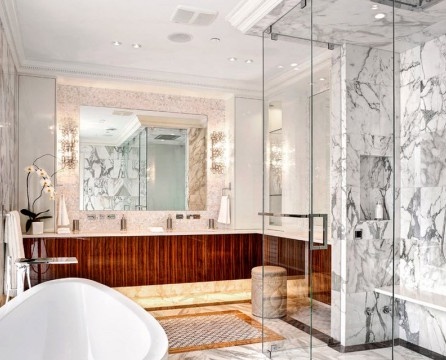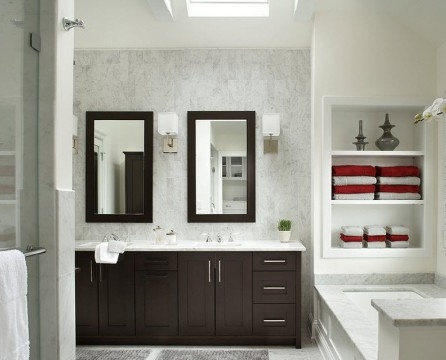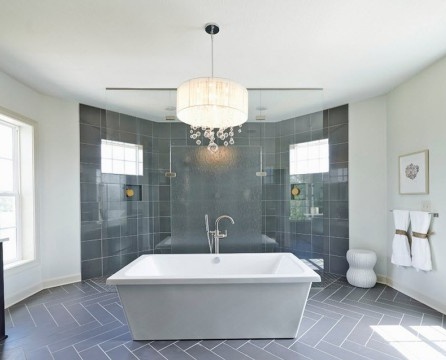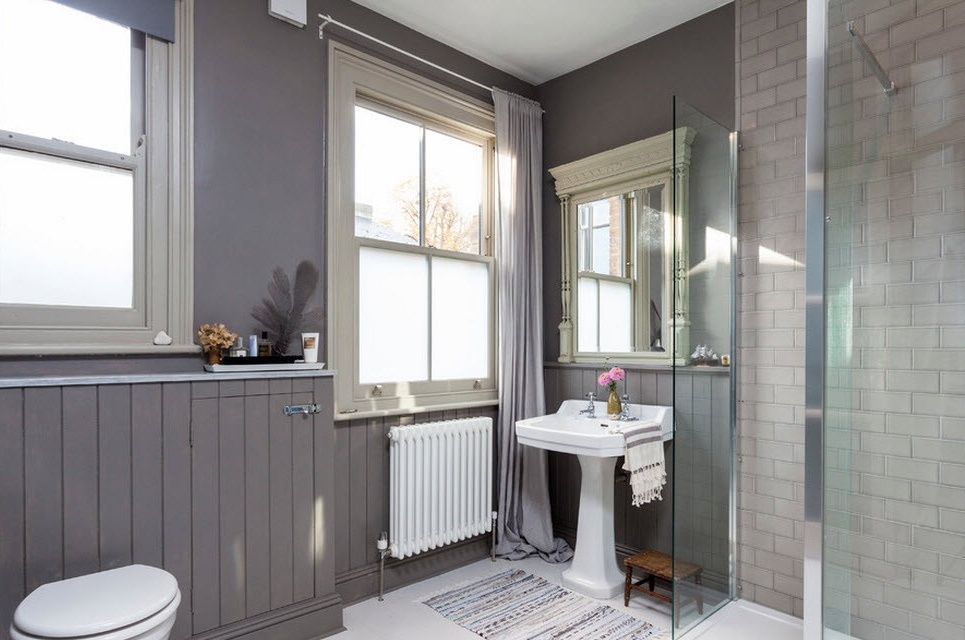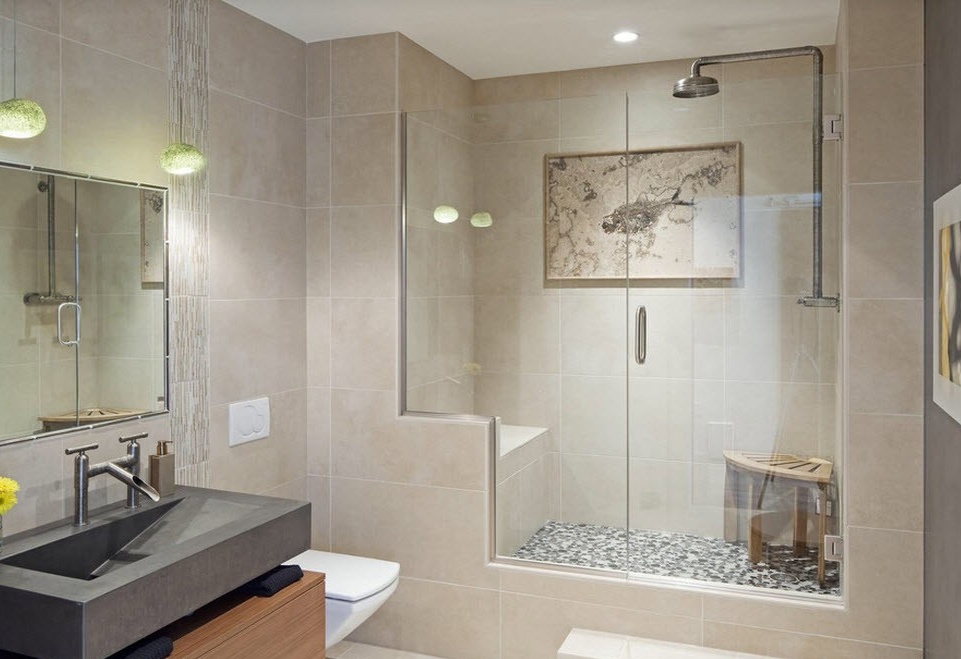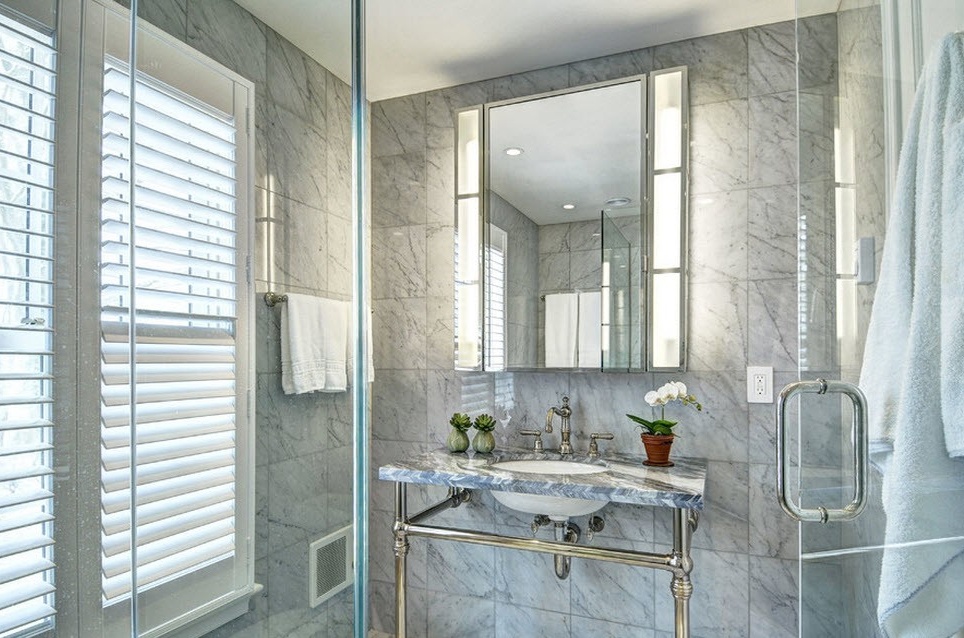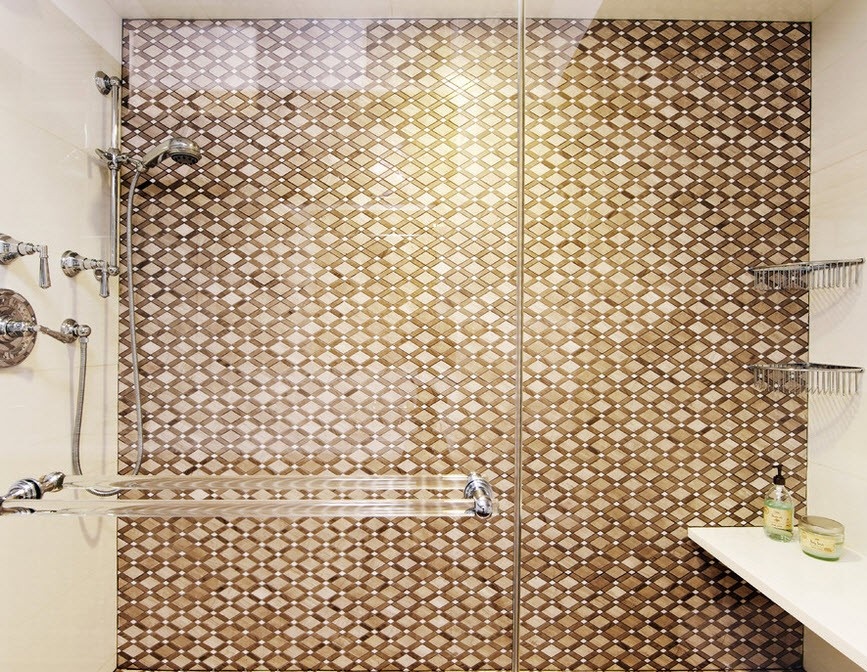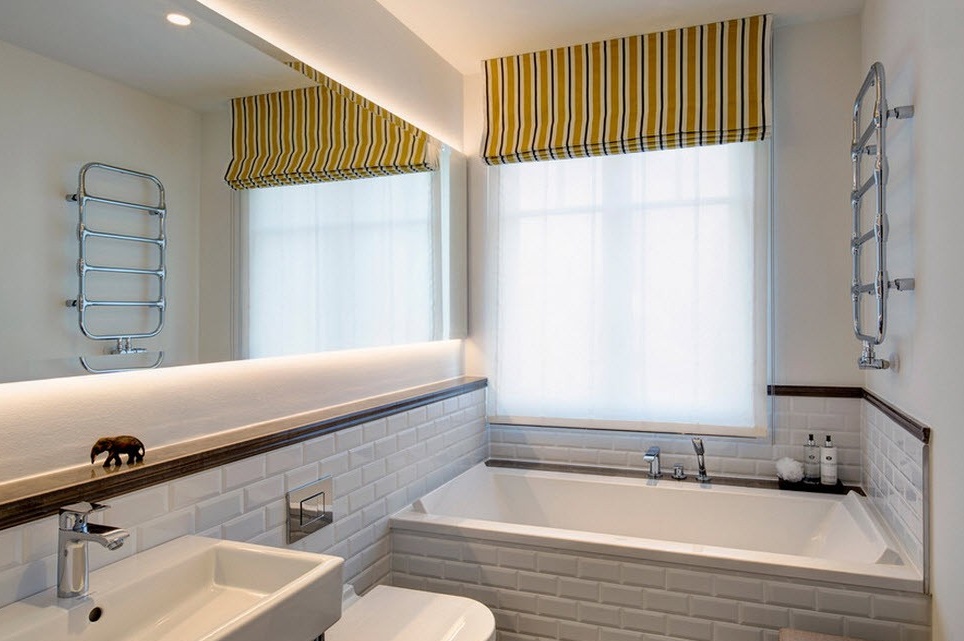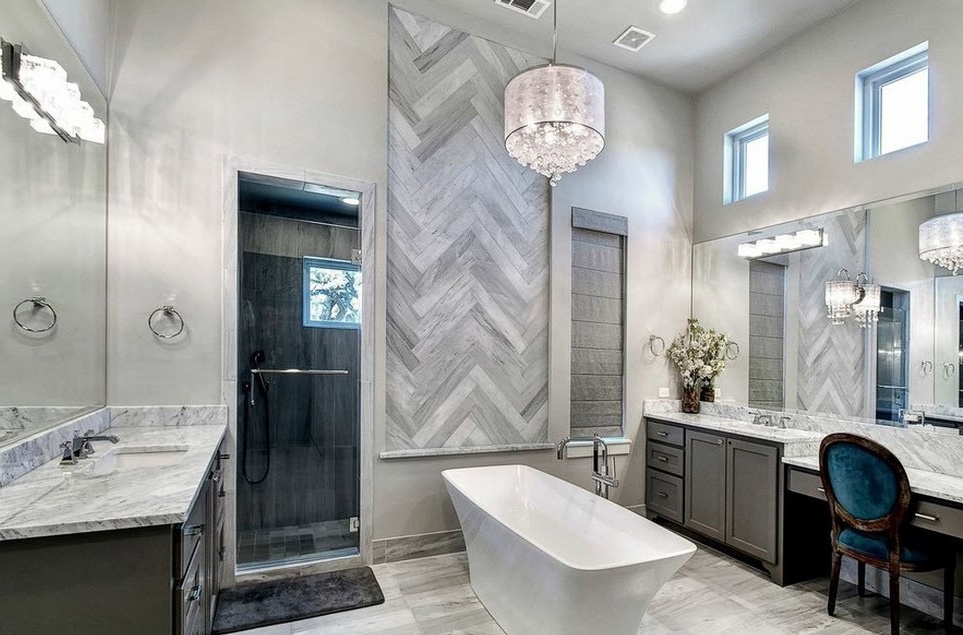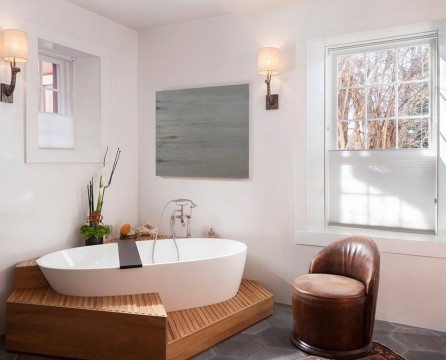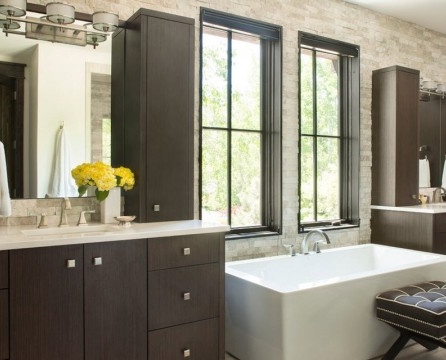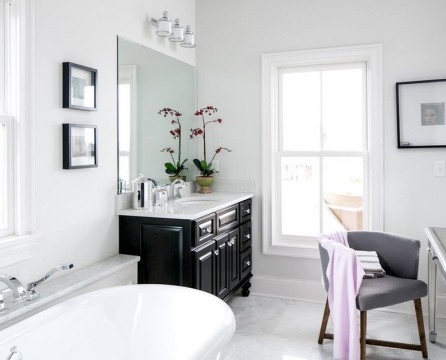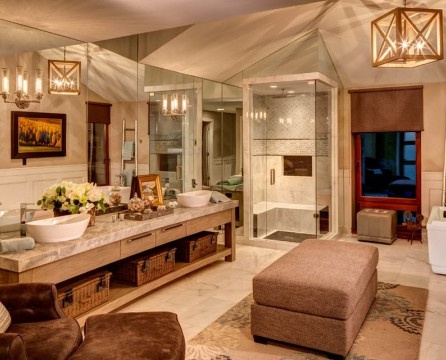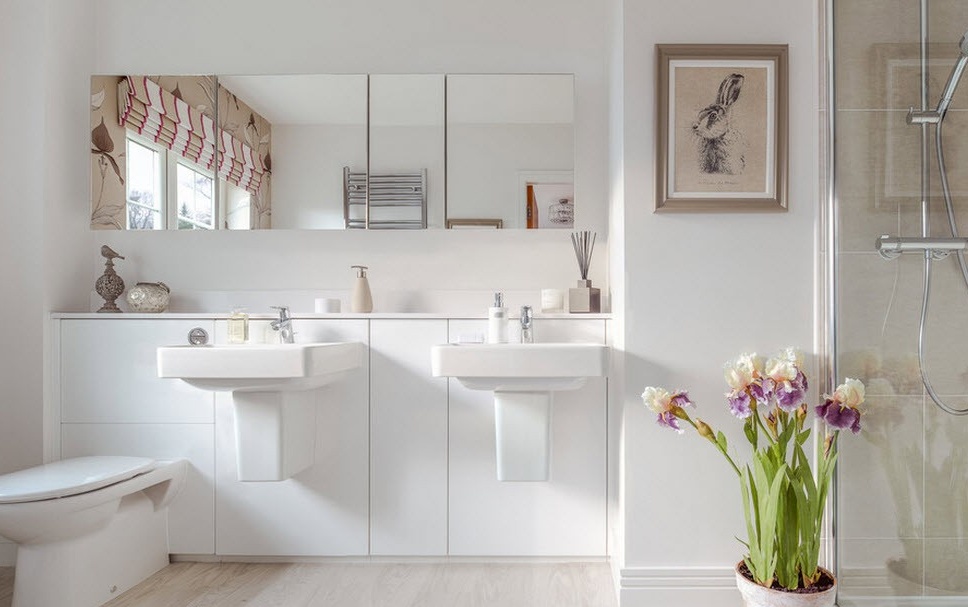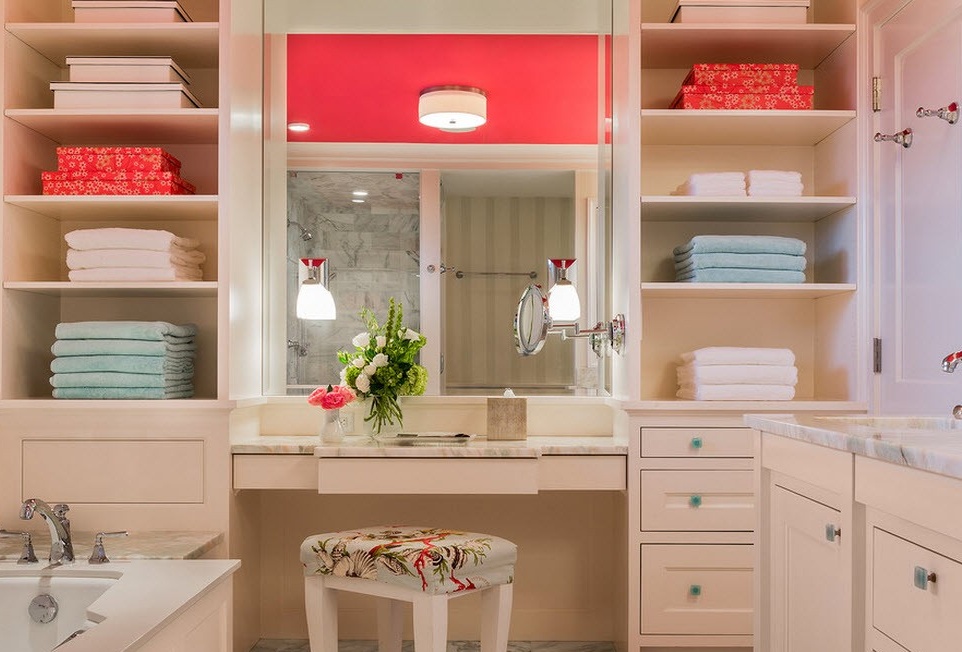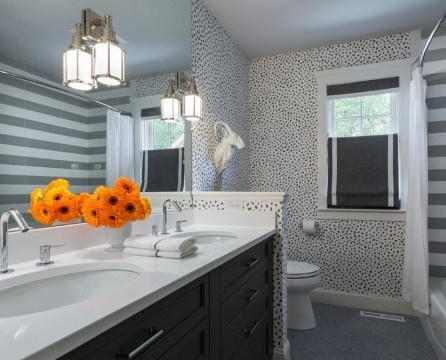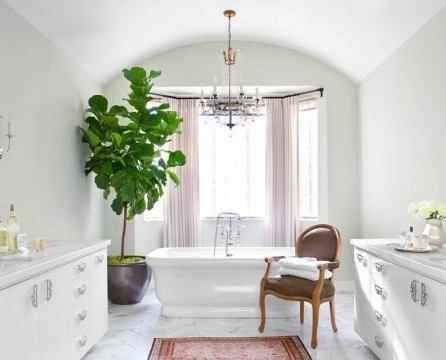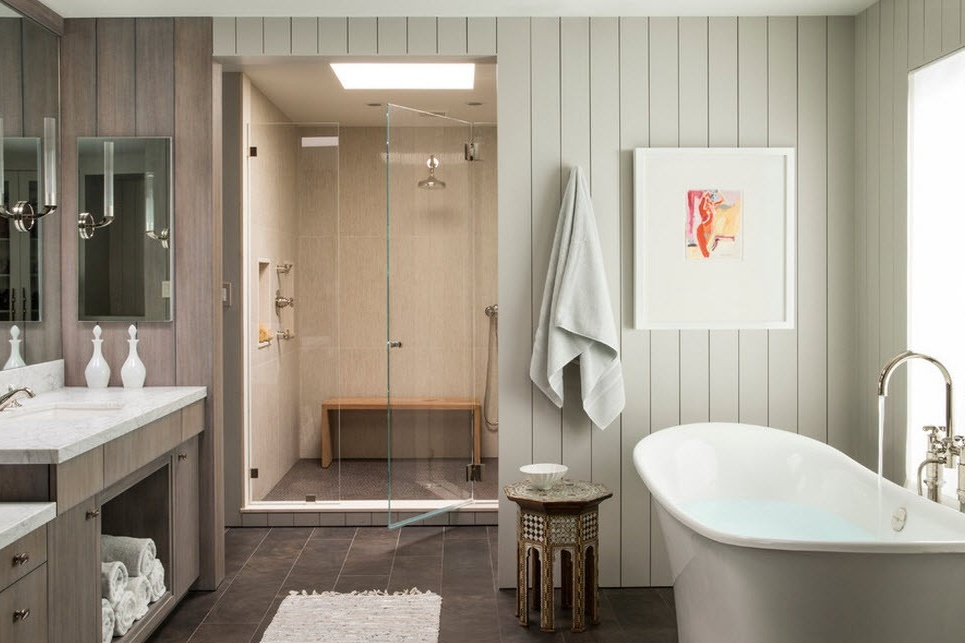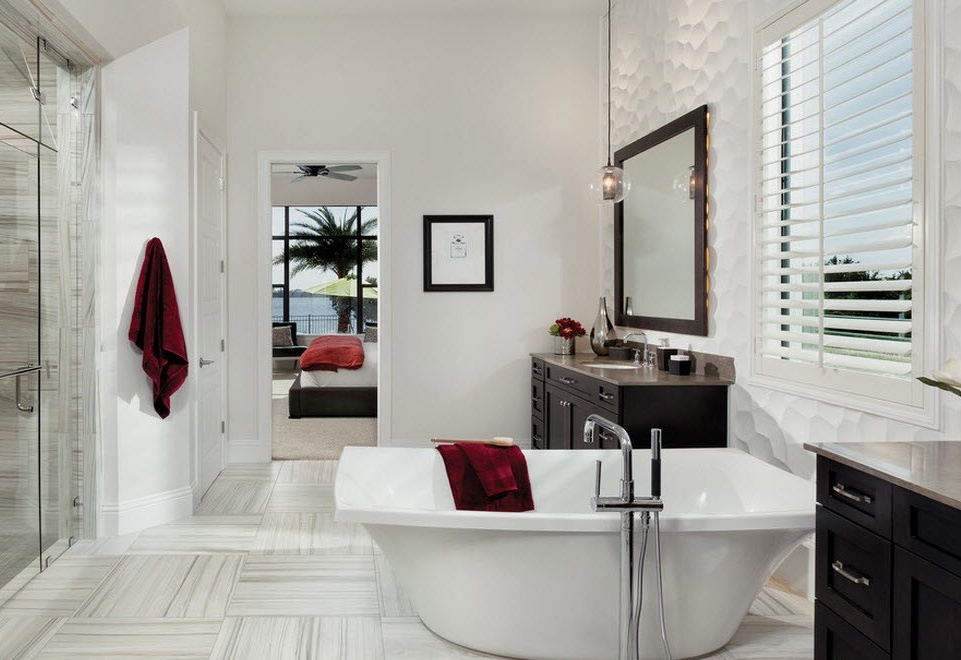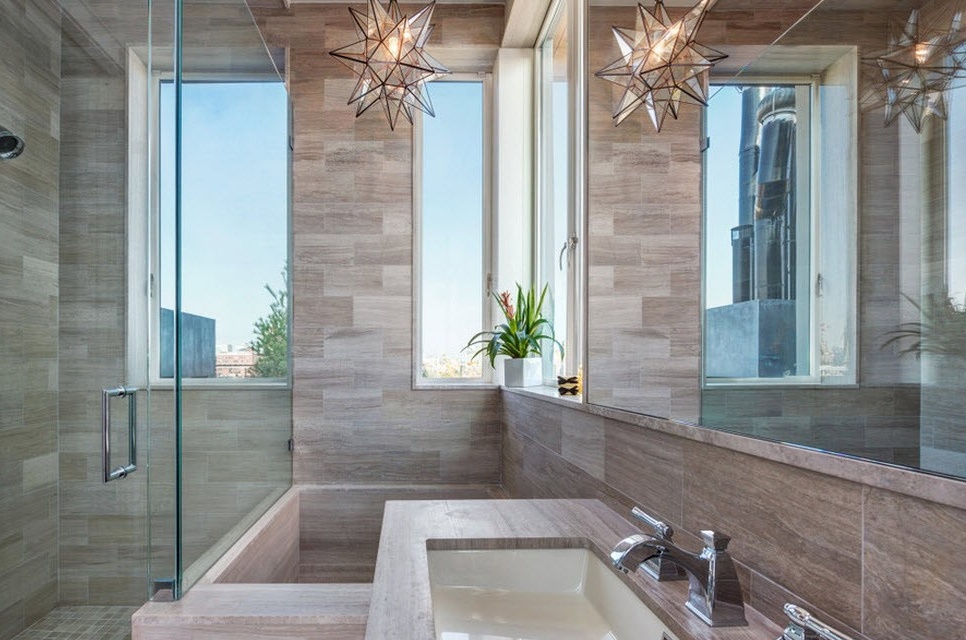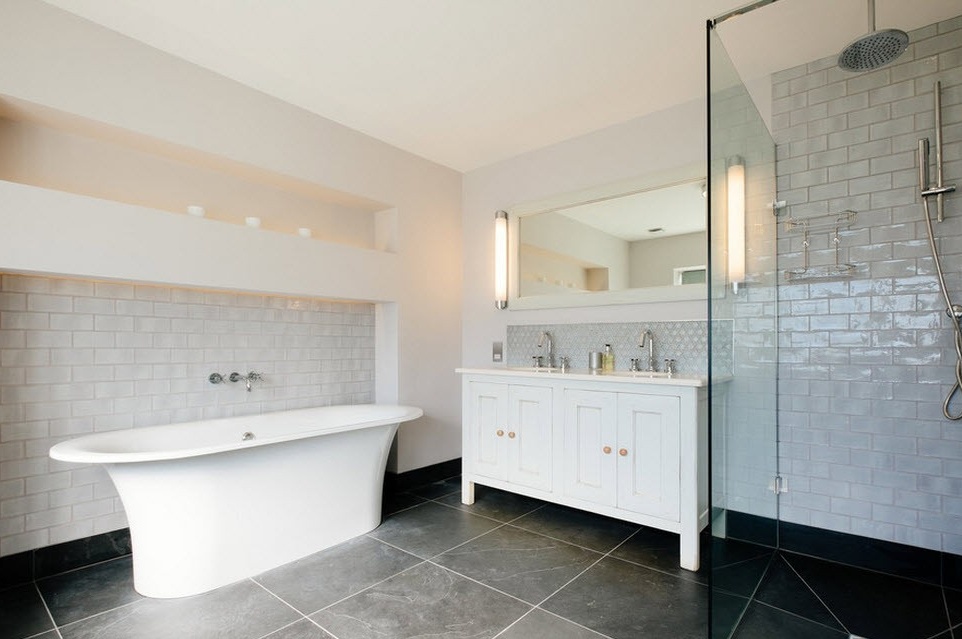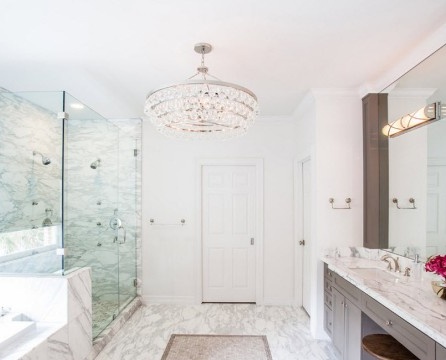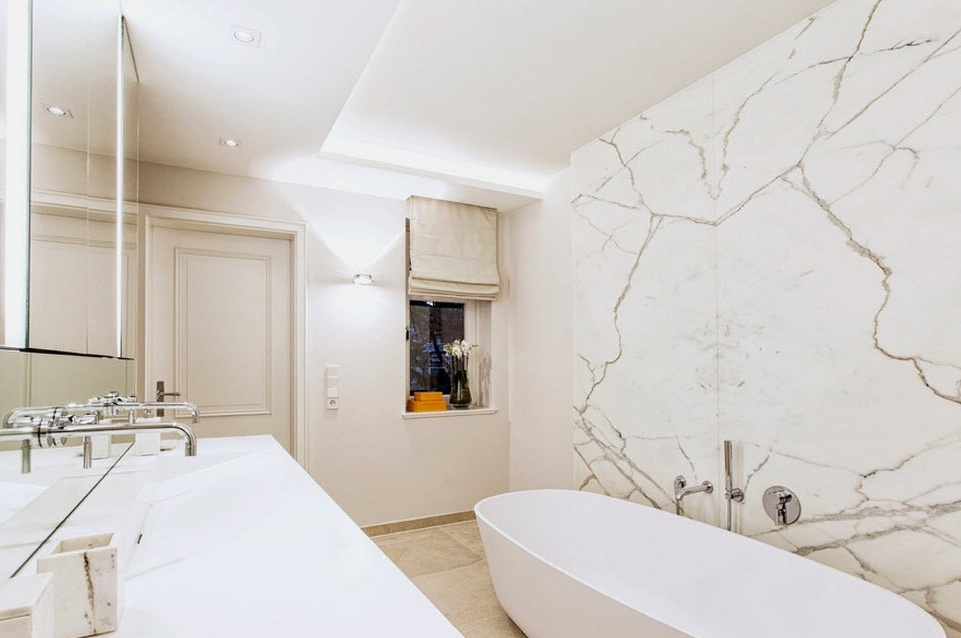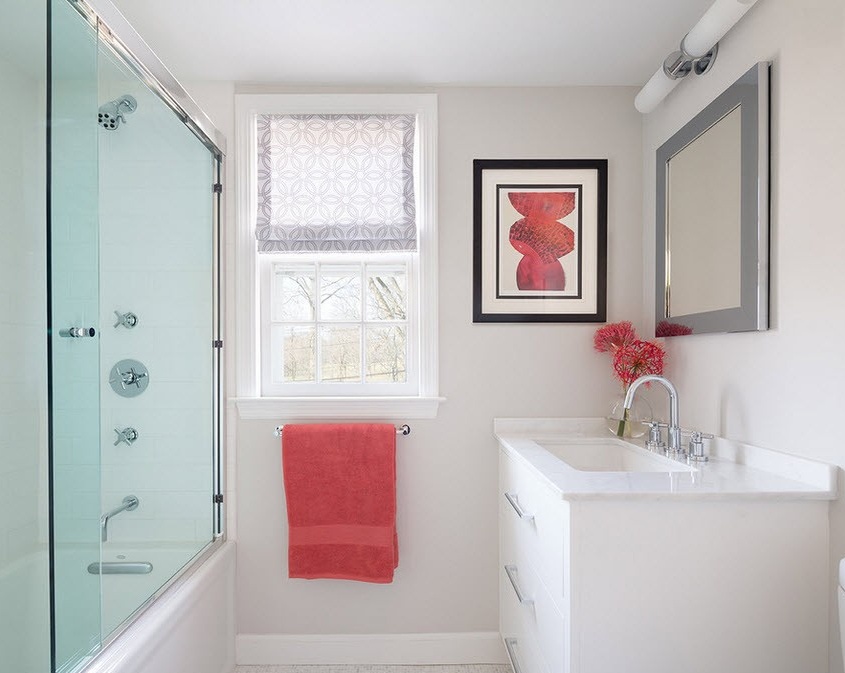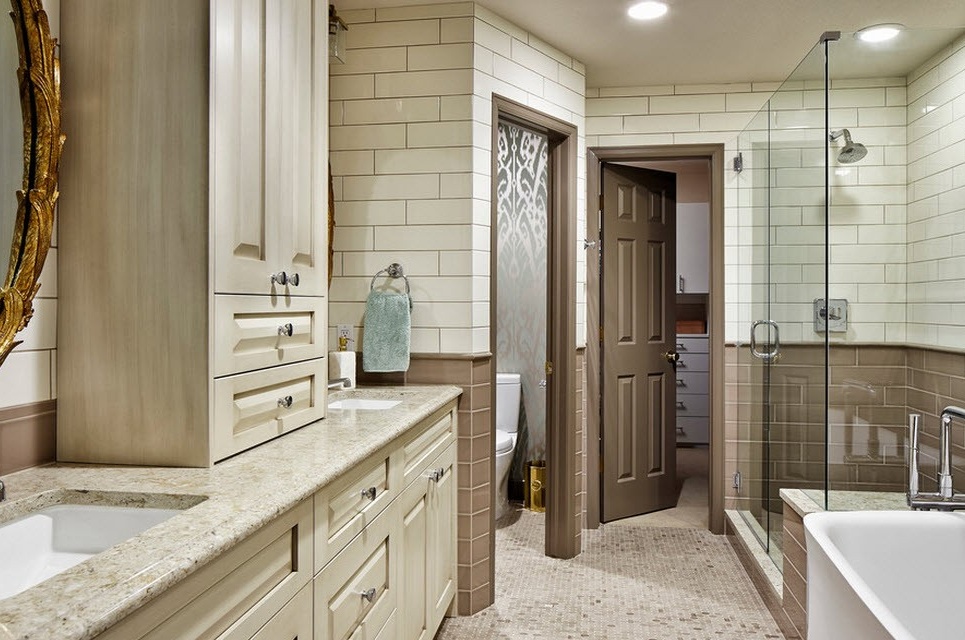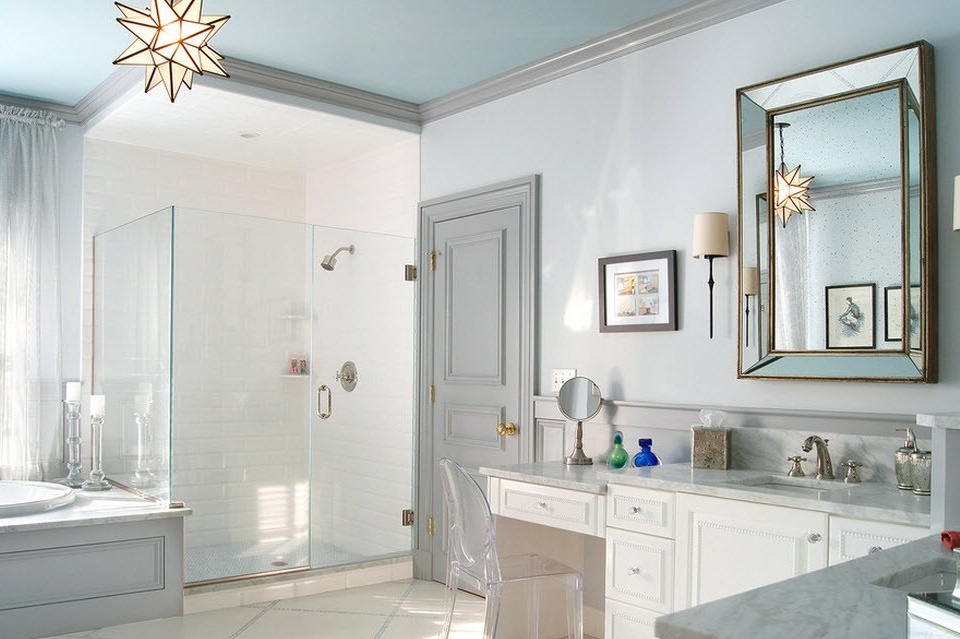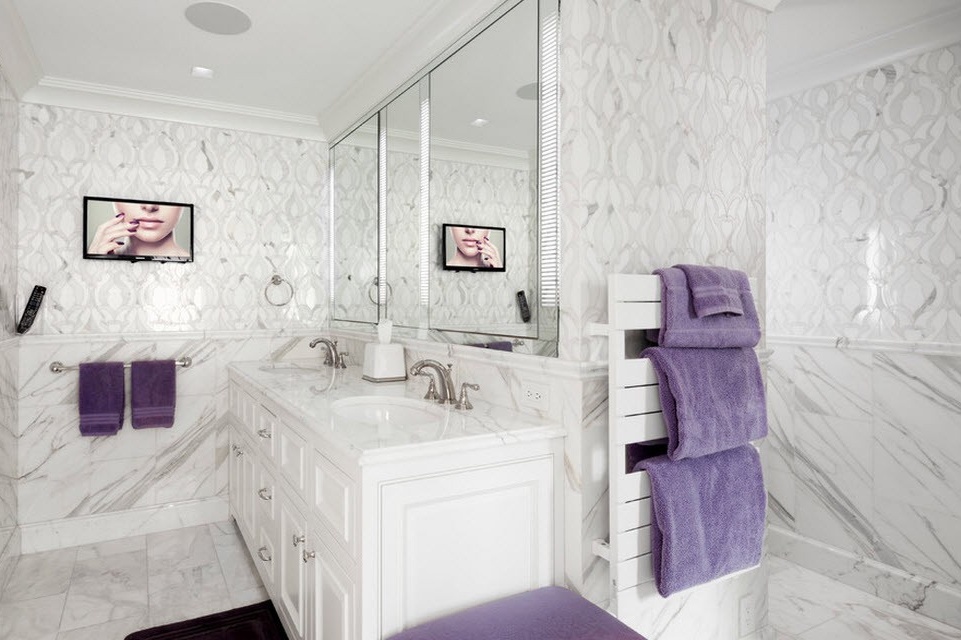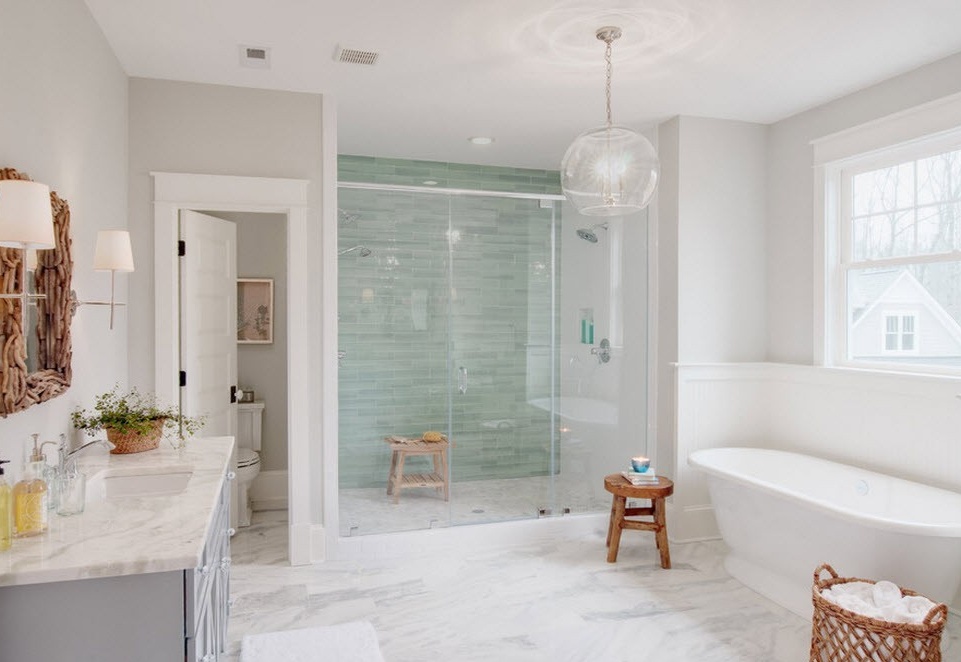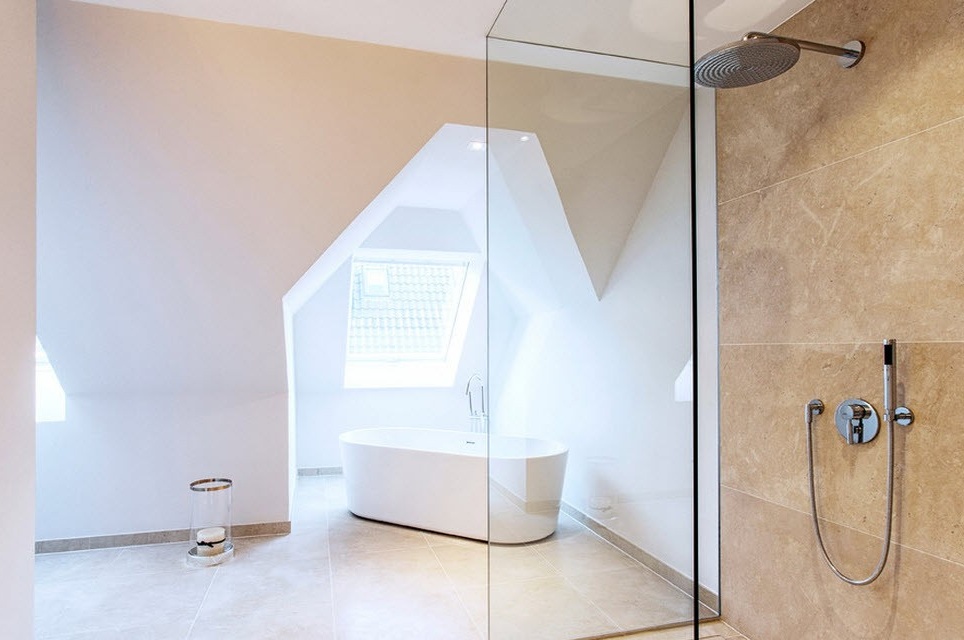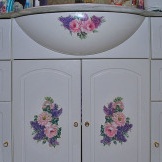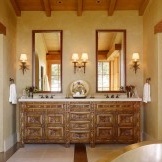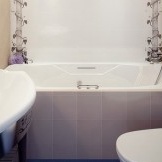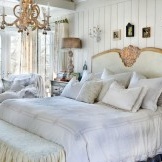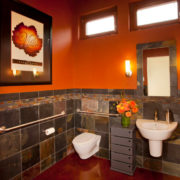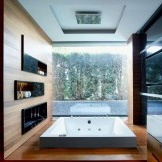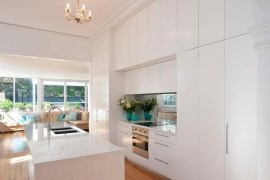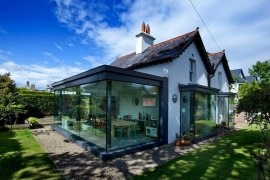A modern bathroom and the timeless truths of a classic interior
The bathroom is a place that does not occupy the largest area in the house, and the smaller it is, the greater the effort it takes to design. The classic interior of a modern bathroom is created by the unity of the basic design concept, which includes
- surface finishing (floor, walls, ceiling) using high-quality and durable materials,
- carefully selected furniture and accessories, plumbing, water supply system of a traditional configuration,
- a combination of different types of lighting,
- calm colors.
The classic bathroom harmoniously combines simplicity, practicality and visual appeal. Classic is durable and always relevant.
Decoration Materials
A bathroom associated with the elements of water requires protection of the surfaces of the ceiling, floor, and mainly walls.
Inside the bathroom, ceramic tile panels are the best choice for wall decoration.
To make a good choice of ceramic tiles, you must first determine the location of its placement. The poor location of the highest quality and most expensive tiles can give the impression of a cheap and low-quality coating.
Ceramic tile is a material that never goes out of fashion, has excellent performance properties - strength and durability, relatively simple installation. But so that the bathroom does not disappoint its owners, care must be taken not to damage the tiles due to poor installation and not to spoil the finish.
Current trends
Currently, interior designers use tiles of various colors and textures to highlight one of the walls, the shower or wash basin area.
Combinations of tiles of various colors and textures are relevant as never before. An interesting option for large and well-lit rooms is a shiny finish with notes of metallic colors.
Another fashionable technique is the use of inserts of various formats and layouts (horizontal, vertical, diagonal). This technique helps create an unusual interior design.
When choosing bathroom tiles, you should pay attention not only to its external advantages, but also to the material from which it is made.
Ceramics and porcelain are traditional and relatively economical materials.
Tempered glass and porcelain stoneware are innovative materials whose glossy texture will give the room charm and charm. The glass and porcelain tile is not porous, therefore it does not absorb moisture, is constantly maintained in good condition and is easy to clean. Porcelain tile can be used not only to cover the walls, but also the floor. One of the advantages of tiles is a huge selection of natural colors and textures.
Water-repellent wallpapers created using new technologies allow them to be used in rooms with high humidity - in kitchens and bathrooms. Their biggest advantage is decorativeness. You can pick up and apply any pattern to the surface that will enliven the monochrome surface.
For flooring, ceramic tiles are traditionally used, large or small format, various shapes - rectangular, square, polygonal. An economical option is laminate, more costly - marble tiles are luxurious. An interesting option is a wooden flooring, which gives warmth and a sense of presence in the sauna.
Bath or hydrobox?
In a limited space, the question may arise of choosing between a bathroom and a shower. If saving footage is not the sharpest, then a combination of both becomes an interesting solution.
(54 areas of the bathroom and shower are successfully distributed in the bathroom. Effectively used the unusual configuration of the room to free up a large amount of free space)
Each object has its own purpose. The bathtub is suitable for long relaxation, and the shower is for quick use. In the eastern tradition, a bath with aromatic herbs and essential oils should be taken only after preliminary cleansing of the body in the shower.
If the bathroom is located in the bedroom, then all its components are selected taking into account the limited space, this room also respects compositional unity - the tabletop to the dressing table, plumbing and furniture are selected to match the marble or ceramic tiles.
The use of showers is an effective way to save square meters.
Combining a classic bathroom with a shower is not an easy task, but there are several tricks to help solve this problem.
Booth shape
The first thing to consider is the form of the hydrobox. Square, rectangular and semicircular bases are used. Square ones are most often used in sizes of sides from 60 cm to 100 cm. Rectangular and semicircular allow you to design the space of a room more dynamically.
The doors of modern showers can have a different design - to open traditionally swinging out or in, move apart, fold. There are options without a door (walk-in design).
Materials for pallets
Acrylic. The most common material with several advantages: high strength, good thermal conductivity, shiny surface. This material retains its original appearance for a long time, creates a pleasant tactile sensation. The usual small height of the acrylic tray makes it easy to enter and exit the shower.
Composite Consists of stone chips soldered using high quality resins. In its strength and durability is not inferior to a solid stone coating.
Ceramics. A material that never goes out of fashion thanks to its practicality and visual appeal. The disadvantage is sensitivity to rough mechanical impact, as a result of which chips and scratches may appear.
Stainless steel. The performance of the material is very high. Relative disadvantage - too noisy under the influence of water jets.
Screens and partitions
Not a single shower cabin does without protection against streams of pouring water. A traditional bath curtain is suitable for this purpose, but the elegance of the panels and the transparent or frosted tempered glass make them more cosmopolitan, fashionable and relevant. Glazing can be designed uniquely, thanks to the pattern applied to it.
Tastefully selected bath curtains will help you easily and effectively change the appearance of the room, make it ultra-modern, vintage, ethnic.
Bathroom equipment
Bathtubs - One of the indispensable attributes of a room, unless, of course, a choice has been made in favor of replacing it with a hydrobox. In the classic design, the presence of the bath is mandatory, all the other elements of the room are built around it. The modern plumbing market offers a huge number of options that will help create an exclusive interior. Vintage forms of bathtubs in the form of a well, a boat, a bowl are in fashion.
Modern forms are also elegant, despite the apparent simplicity, include regular or truncated geometry - drop, cone, rhombus, rectangle.
Washbasins are selected taking into account the general style of the bathroom, which most often matches the color and texture of the walls. The classic version - sinks on a pedestal, which are used as an independent object, not included in the furniture set, countertop. They are distinguished by a wide variety of shapes (oval, rectangular, free-standing sink configurations on racks in the form of columns, a triangle, in the shape of a flower stalk), are functional, save space, but give little room for placing bathroom accessories.
For a modern bathroom in a classic style, traditional faience sinks are suitable, manufacturers' more modern and stylish proposals are sinks made of tempered glass or stone. Onyx or marble sinks look luxurious and exquisite.
Water fittings. Water fittings are the most important element in the design of a bathroom. Various forms, finishes, technologies and styles ensure the unity of function and design, make the design complete.
Shiny chrome taps, shower hoses perform not only a direct function, but also act as spectacular decoration elements.
Radiators For cold and wet rooms, it is important to use special radiators - towel dryers and bathrobes. They can be of various designs and designs - wall mounted, located in the form of consoles or folding.
Furniture
Furniture, in which washbasins are often integrated, can consist of stone elements (countertops), wooden elements (shelving, drawers and shelves) or MDF laminated or varnished, modern transparent acrylic.
In spacious rooms, in order to create a cozy atmosphere, it is appropriate to use various types of seats, for example, a leather armchair, a wooden chair or a bench.
Accessories and decor
You can change the style of the bathroom by modernizing important elements of the interior. We are talking about the bathroom and other plumbing, this is the first thing they pay attention to when entering the room. But also an important functional and decorative role is played by small details in the form of bath accessories - creams, soaps, brushes, combs, sponges, towels and napkins.
Although lovers of minimalism may want to hide such accessories behind the facades of shelves and shelves.
The charm and personality of the bathroom add detail. Decorative elements can be wall panels in frames, artificial or living indoor plants.
Complement the composition and make it more home matched to the mat for the bathroom.
Illuminations
To create a stylish bathroom, you should take care of its good lighting. Twilight is not the best decoration for the room, in addition, it visually reduces the space, so the best option is a combination of artificial and natural lighting.
Of course, not everyone is the happy owner of a window in the bathroom, but if there is one, then you need to use it to the maximum. Penetrating sunlight makes the interior light, warm and dynamic.
For artificial lighting, you should choose the central (ceiling or wall) location of the intense radiation source, for example, white halogen lamps.
Mirrors
Mirrors play an important role in the interior of a bathroom. In addition to their direct function, they perform tasks to visually increase the space, and also participate as an element of light design.Ultra-modern options are “smart” mirrors, which serve as a kind of monitor that displays data, for example, about the weather, or allows you to adjust the temperature and lighting of the bathroom. Modern mirror surfaces are made using LED-backlight (white or color) or classic lamps with glass shades. Mirrors can have any shape - from strictly geometric to amorphous futuristic.
Color spectrum
Cleanliness, freshness, relaxation in the evenings and the awakening of energy in the mornings are feelings that arise in a properly designed bathroom.
White is perfect, but its elegance is strict and cold.
A more individual, intimate space can be created through experiments with chromatic tones, which in their own way affect perception and generate the desired mood. So that the dominant color does not tire, you should "dilute" it with other tones, but do not forget about the rule - do not use more than 3 colors in one room.
A good option is to play light and dark shades of the same color. Fans of aesthetics Feng Shui choose mainly pastel colors (pink, green, blue) or neutral (cream, yellow, ocher).
Blue - a soft color in which either the walls or the ceiling can be decorated, evokes a sense of calm and lightness.
Brown - a color that goes well with beige tones, is associated with nature and the elements of the earth. This range is suitable for an elegant men's bathroom, symbolizing timelessness and moderation. Choosing a brown tone for decoration, you should listen to the opinion of designers who advise to avoid chocolate shades that darken the room.
(9 Brown-beige colors create an atmosphere of warmth and solidity in the interior of the bathroom with the dominant strict geometry of the facades of furniture and equipment)
Accessories or, for example, a mirror frame, can be executed in purple or orange tones, bringing a sense of joyful energy.
The inclusion of plum color elements in the interior (furniture upholstery, towels, wallpaper, veins on ceramic tile panels) makes the room feminine and glamorous. This tone warms the space, introduces notes of romanticism into it. Plumbing and furniture should be white.
The bath is the wettest room in the house, so you should take care of a good ventilation system to maintain a healthy atmosphere for the person and the long-term functioning of all objects in the room. If the bathroom has a window, then open it as often as possible in order to ventilate and dry the room.
A beautiful bathroom is sensitive to mess and carelessness, which can nullify all the efforts of the designer.

